First Steps to Footwear: Knowing When to Buy Baby Shoes
Avoid unnecessary spending and potential foot problems. Learn the truth about when you need to buy shoes for your baby.
Updated March 26, 2025
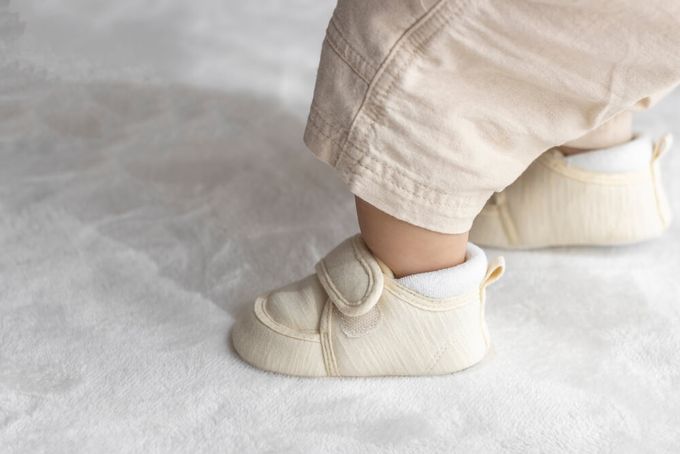
As a new parent, you want the best for your baby—especially when they start exploring the world on their tiny feet. But with so much conflicting advice, how do you know when it’s the right time to buy their first shoes?
The wrong choice could lead to discomfort, balance issues, or even long-term foot problems. And let’s face it—no one wants to waste money on shoes that will only be outgrown in weeks!
The good news? You don’t have to guess. By understanding key milestones, foot development, and expert recommendations, you can confidently choose the perfect moment to introduce shoes—ensuring your little one steps into the world safely and comfortably.
Let’s walk through the signs that your baby is truly ready for their first pair!
» Find your baby's first shoes: Browse our sneaker collection
When Do Babies Need Shoes?
Babies typically start walking between 9 and 18 months of age, and that's when their shoes become a big part of their day-to-day. Here are some key milestones in their walking development:
Pushing Up: 2-5 months
Rolling Over: 3-6 months
Sitting With Support: 4-7 months
Sitting Without Support: 6-9 months
Scooting: 7-10 months
Pulling Up to Stand: 8-12 months
Crawling: 8-12 months (some skip this phase)
Walking With a Very Wide Stance: 9-14 months
Walking With Support: 10-14 months
Walking Alone: 11-15 months
Note: Walking ability develops at different paces, but one thing remains consistent—babies outgrow shoes fast. Between birth and two years old, they may need new shoes every 2 to 6 months.
From 12-24 months, expect to go up a full size every 3-6 months. Checking your baby’s shoes monthly ensures they have room to grow without discomfort.
» Check out the telltale signs that your baby will start walking soon
When Do Babies Need Shoes?
Before taking their first steps, babies often exhibit pre-walking skills such as:
Pulling Up to Stand: Around 7 to 10 months.
Cruising: Walking along furniture for support, typically between 9 and 13 months.
Standing Unassisted: Babies usually stand without support between 10 and 16 months.
Your little one should go barefoot as much as possible while learning to walk, as this helps with sensory feedback and foot growth. To protect their feet, have them wear shoes only when going outside.
Did You Know?
A newborn baby's shoe size before birth measures around 8-9.5 cm (3.1-3.7 inches), which corresponds to a US size 0-1. But newborns don’t need structured shoes—soft socks or booties are enough to keep their feet warm in the first few months.
» Learn to detect if your baby is walking correctly
5 Features of Best First Walking Shoes (Pediatrician-Approved)
A few important features are necessary for first-walking shoes if you want your child's feet to grow healthy.
Here are five key features of pediatrician-approved first walking shoes:
- Flexible Soles: This feature helps your little one feel the ground and move their feet naturally, which is crucial for developing balance and walking skills.
- Breathable Materials: This feature keeps your kid's feet cool and dry, reducing discomfort and potential skin issues. Choose shoe fabrics like combed cotton and cotton mesh for ventilation.
- Wide Toe Box: This feature helps your baby's toes spread naturally, promoting healthy foot development. Prioritise features with wide toe boxes.
- Adjustable Straps: Shoes with velcro straps make it easy for your child to put on and take off their shoes, promoting independence. Since babies' feet grow rapidly, check their shoes regularly. If you notice red marks, difficulty putting them on, or your baby frequently removing them, it may be time to size up. On average, babies need new shoes every 2 to 6 months.
- Stable Heel Cup: This feature supports your kid without restricting movement, preventing slipping. Choose shoes with a stable heel cup to support their developing ankle muscles.
» Discover the best shoes for babies learning to walk
How to Choose Your Baby's First Shoes
When choosing your baby's first shoes, there are a few factors to keep in mind. Baby shoes should be:
- Breathable: Soft, flexible leather is a good choice for breathability. Cotton or canvas are also suitable options.
- Comfortable: Ensure there's room for your baby's toes and that their feet can move. Check for a small gap between the heel of the shoe and your baby's heel and a thumb's width between their big toe and the front of the shoe.
- Safe: Look for non-slip soles, preferably with a rubber grip, to ensure safety and prevent slipping.
- Lightweight: Walking is enough of an effort for babies, so lightweight shoes can make it easier for them to learn.
When choosing your baby's first shoes, it's important to get the right size.
Start by measuring your baby’s feet—place their foot on a piece of paper, mark the heel and longest toe, and measure the distance. Then, check a baby shoe size chart to find the best fit.
Make sure there's about a thumb’s width of space between the toes and the front of the shoe to allow for growth. Babies' feet grow quickly, so you may need to size up every 2 to 6 months.
» Learn how to measure your child's feet for shoes
Soft Sole vs. Hard Sole Baby Shoes Comparison
When choosing a shoe for your baby, you might wonder if soft or hard soles are best for their foot development. Below is a comparison that can help you decide, depending on your priorities.
| Feature | Soft Sole Shoes | Hard Sole Shoes |
|---|---|---|
| Natural Movement | Allow for natural foot movement and flexibility, mimicking barefoot walking. | Can be heavier and more restrictive, potentially hindering natural movement. |
| Comfort | Lightweight and comfortable, reducing discomfort. | Can be heavier, potentially causing fatigue. |
| Breathability | Often made from breathable materials, keeping feet cool and dry. | May not be as breathable, depending on the material. |
| Protection | Limited protection from rough surfaces or sharp objects. | Provide better protection from rough surfaces, hot/cold temperatures, and sharp objects. |
| Durability | Less durable, may wear out faster. | More durable, withstands more wear and tear. |
| Stability | May be slippery on smooth surfaces, less stable. | Offer stability and support, beneficial for independent walkers. |
| Transition | Ideal for early walkers, promotes balance development. | Can be challenging for children transitioning from soft soles. |
| Best Use | Suitable for indoor use or early walkers. | Suitable for outdoor use and independent walkers. |
» Check out the best shoes that stabilise your kid's ankles
The Right Shoes for Your Baby
Choosing the right shoes becomes crucial as your baby starts taking those first wobbly steps. That's where First Walkers comes in.
Their wide range of shoes has all the above qualities, making them the perfect pair for your baby's growing feet.
» Is your baby learning to walk? Browse our collection first walker shoes
Disclaimer: First Walkers' information is intended for educational and informational purposes related to toddler footwear and feet. We encourage you to consider individual circumstances and consult qualified orthopedists about specific conditions.
Related Articles

Helping Your Little One to Walk on Their Own: A Parent's Guide
Jasrah Javed
December 6, 2024
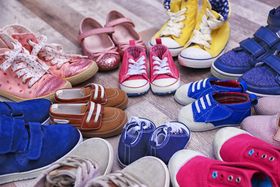
10 Best Kids' Shoes for School: Balancing Style and Comfort
Jasrah Javed
February 25, 2025
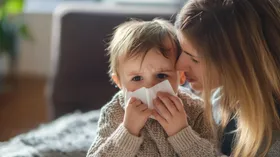
Dealing With Shoe Allergies in Children: What to Look For
Bhashwati Deb Barma
December 5, 2024
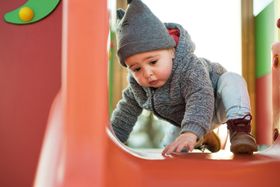
8 Fashion Tips for Dressing Kids Stylishly
Jasrah Javed
January 30, 2025
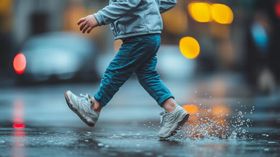
Why Your Child Runs With Straight Legs: Addressing Gait Concerns
Jasrah Javed
December 10, 2024
Related Posts
Bhashwati Deb Barma
10 Best Shoes for Baby Foot Development: Support Happy Feet
Babafemi Adebajo
7 Best Pre-Walker Baby Shoes: Step into Quality and Comfort
Babafemi Adebajo